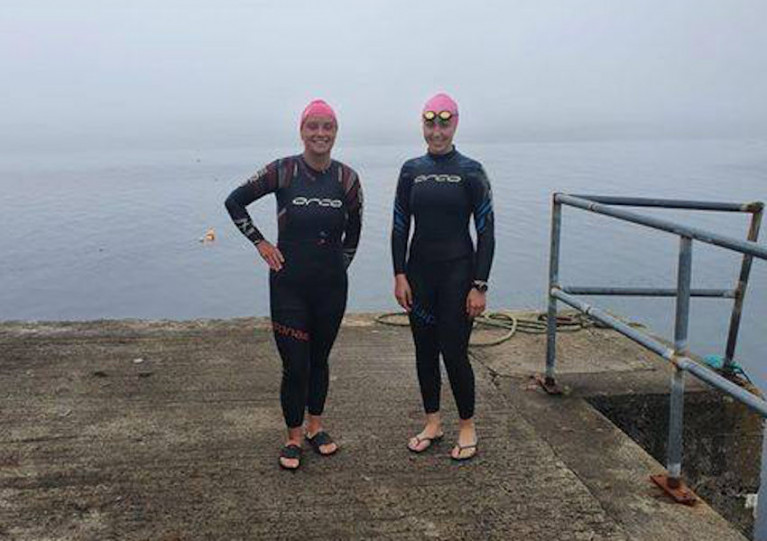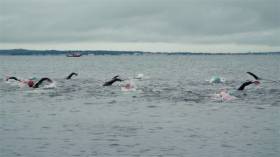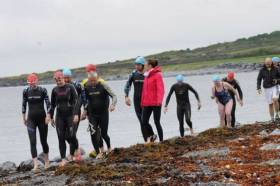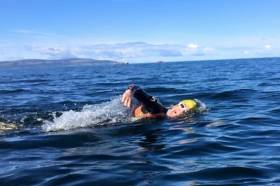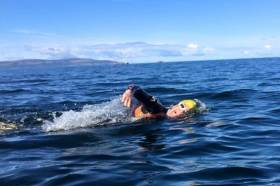Displaying items by tag: Galway Bay Swim
This year’s Galway Bay Swim took on a different format than usual, as participants were encouraged to ‘swim the bay their way’.
As Galway Daily reports, social distancing issues prevented the annual gathering of open sea swimmers to cross Galway Bay from Aughnish in Co Clare to the Blackpool Diving Tower in Salthill.
Instead, swimmers were asked to cover the 13km distance of their own accord in any location where they could do so within the coronavirus health guidelines.
And many did just that — in fact, more than 500 swimmers, far more than the typical 150 participants — making the 15th annual Frances Thornton Memorial Galway Bay Swim effectively one of the biggest yet.
Last year’s swim raised over €100,000 for Cancer Care West and its hoped this year’s event, despite the changes, will raise even more vital funds for services cancer patients and their families.
Galway Daily has more on the story HERE.
Galway Bay Swim 2016 Captured On Video
#GalwayBaySwim - Hello Deer Media was on hand to capture on video the tremendous effort on display at last weekend's Frances Thornton Memorial Galway Bay Swim.
As previously reported on Afloat.ie, more than 100 swimmers crossed Galway Bay from Auginish to Salthill on Saturday 23 July for the 11th annual open sea swim in aid of Cancer Care West.
Big Turnout For 2016 Galway Bay Swim
#GalwayBaySwim - More than 100 swimmers crossed from Auginish to Salthill in the 11th annual Frances Thornton Memorial Galway Bay Swim at the weekend, as Galway Bay FM reports.
First across the bay on Saturday 23 July in his wetsuit was Stewart Moore with a time of 2h36m, followed by Dylan Barrett (1st male togs, 2h38m), John Burgess (2nd male wetsuit, 2h58m) and Aimee Walsh (1st female togs, 3h03m).
Full results can be found at the Galway Bay Swim website, while photos of the swimmers and winners are on Facebook.
The 13km open sea swim in aid of Cancer Care West saw tougher conditions than usual with a lot of jellyfish in the water.
"But there were no injuries and everyone thankfully finished and enjoyed the swim," said Fiona Thornton, daughter of Frances Thornton to whom the event is dedicated.
A documentary on the now annual fixture was screened in Galway earlier this year, as previously reported on Afloat.ie.
Galway Bay Swim In Call For Support Boats
#GalwayBaySwim - Organisers of the Frances Thornton Memorial Galway Bay Swim are appealing for support boats to help out on the day.
As Galway Bay FM reports, this year's event in aid of Cancer Care West will take place on Saturday 23 July with 75 swimmers signed up to cross the bay from Auginish to Salthill.
And as ever, safety comes first, with race organisers seeking volunteers from the local maritime community who can spare their time and their boats – preferably 5m RIBs with a 50HP engine – for the duration of the 13km crossing.
Earlier this year a new documentary celebrating the first 10 years of the Galway Bay Swim was screened in the city, as previously reported on Afloat.ie.
Galway Bay Swim Subject Of New Documentary
#GalwayBaySwim - A documentary celebrating 10 years of the Galway Bay Swim had a special screening in the City of the Tribes this week to mark the launch of the 11th charity swim this July.
As Galway Bay FM reports, the documentary was directed by local filmmaker Pat Comer and pays tribute to the hundreds of swimmers who've taken to the water at Auginish and crossed the bay to Blackrock Diving Tower in Salthill since 2006 in honour of the late Frances Thornton and to raise finds for cancer support.
"The documentary really captures the essence of the swim and everyone that takes part in a voluntary or swimming capacity," said David O'Donnell of Cancer Care West.
Registrations open this Sunday 20 March for the 11th swim, scheduled for Saturday 23 July. Galway Bay FM has more on the story HERE.


























